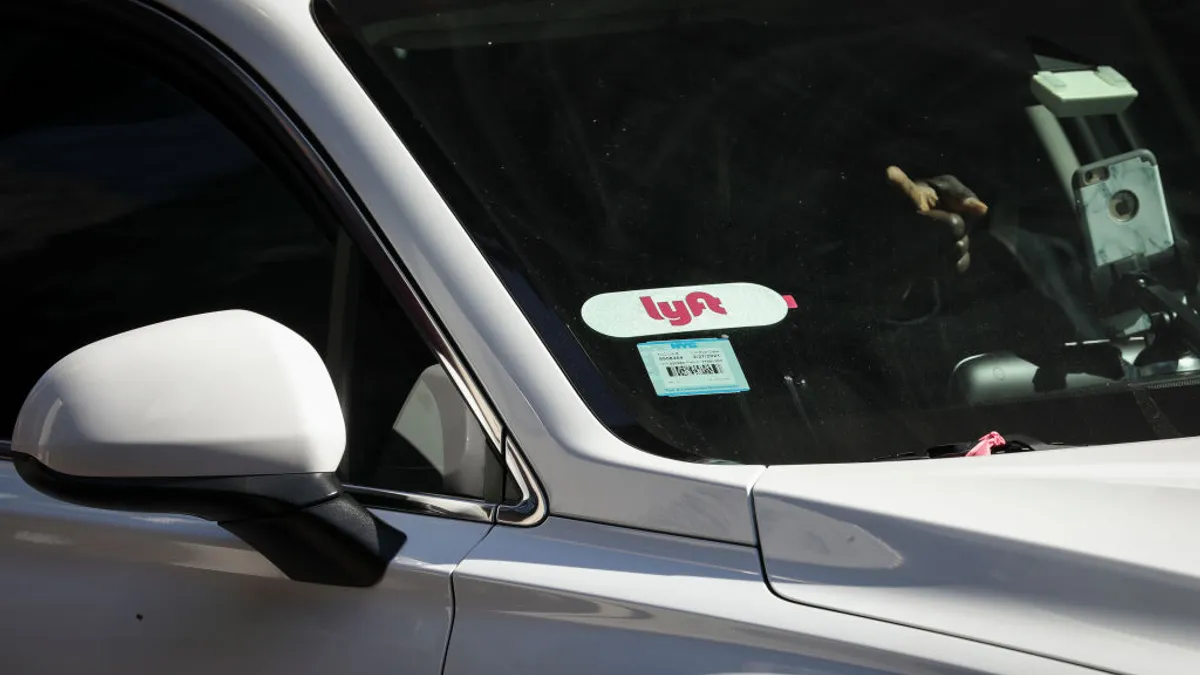Dive Brief:
- Lyft has partnered with Olo to use Olo's Dispatch product to facilitate delivery across Olo's network of restaurant brands, the companies announced on Tuesday.
- Olo's product allows restaurants to generate orders through their websites and apps. The platform then selects delivery service providers, including in-house couriers, based on price, timing, availability and other criteria.
- Lyft has been testing on-demand delivery since 2020, when it launched Essential Deliveries. This program offers various delivery items, including meals, to government agencies, local nonprofits, businesses and healthcare organizations.
Dive Insight:
While Lyft is entering a very competitive and crowded segment, it could still see success. Unlike the top three delivery aggregators — Uber Eats, Grubhub and DoorDash — it will not offer a consumer-facing marketplace. This could result in lower commission fees for restaurants, as traditional delivery marketplaces typically charge commission rates up to 30% depending on the type of services restaurants ask for.
"As a transportation-focused company, we aren't interested in building consumer-facing marketplaces for groceries or food, but we can add real value in delivery both for drivers and partners via Dispatch's frictionless process and the scaled national network of drivers on Lyft's platform," Justin Paris, Head of Lyft Delivery, said in a statement.
Olo has been expanding its reach with its Dispatch product and now partners with the top three restaurant delivery platforms, which will increase access to last-mile delivery for restaurant providers. The addition of Lyft will help improve competitive delivery pricing for restaurant brands and guests, Shalin Sheth, VP and GM of Dispatch for Olo, said in the press release.
The addition of restaurant delivery to Lyft's services will also help the company boost revenue, which slid during the pandemic as more people stayed home. The company's revenue has been recovering, reaching $864.4 million in Q3 2021 versus $499.7 million in the year-ago quarter, according to an earnings release. Net losses for Q3 2021 also declined to $71.5 million compared to $459.5 million in the year-ago quarter.
Lyft is also boosting its driver supply, which was up 45% in Q3 2021 compared to 2020, which will help the company expand its delivery reach as well. Adding a restaurant delivery channel could also attract more drivers looking for diversification outside of just ride-sharing.










